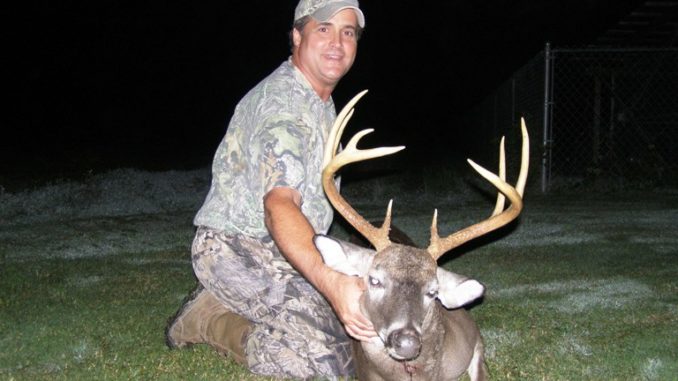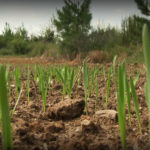
Good options are available for acidic conditions
Every deer hunter dreams of shooting a Boone and Crockett-class buck, but unfortunately, of the 6,000 entries in that record book, North Carolina and South Carolina only boast a minute percentage. However, the Carolinas produce hundreds of fine bucks every year, pushing 200 pounds and wearing racks more than 130 inches.
For most hunters in the Carolinas, a 185-pound 10-pointer grossing 137 inches or more is a mature buck and something to be proud of. This class of animal is mature, and hunters can expect to encounter such a trophy on properties where the bucks are allowed to age and get a hearty, nutritious diet.
Many of the top trophy buck states, such as Minnesota, Iowa and Kansas, have massive agriculture operations providing deer and other wildlife with premium nutrition. For local hunters who want to improve the food and nutrients available for their deer without going into the agriculture business full-time, a full complement of energy-packed food plots is the way to go, and October is about the last hurrah to get a cool-season food plot in 2016.
Unfortunately, most food plots are planted in forested lands or high organic soils where natural acidity soars. Residue from evergreens and properties with heavy organic debris produce an excess of hydrogen ions that lowers the soil’s pH, but this doesn’t have to cripple the efforts of a habitat-management guru, either. While soil acidity can be offset with persistent limestone applications several months before planting, by October, it is too late to alter the pH for an immediate cool-season planting. On the bright side, there are several options available for an immediate cool-season planting that can withstand less-than-optimal acidic conditions.
What makes an acidic soil? On the pH scale, any value less than 7.0 is considered an acidic soil. And the lower the pH value, the more acidic the soils are, and that can range from extremely acid if below 5.0, moderately acid between 5.0 and 6.5, and mildly acid if between 6.5 and 6.9. If the soil pH is less than 5.0, the growth potential for a crop and the possibility of a lush food plot is low. But anything above 5.0 can offer several opportunities for the October food-plot contractor.
In the Carolinas, forest soils vary tremendously. Soils with high organic content and evergreen forests have high soil acidity. One can expect the pH to range between 4.5 and 6.0 depending on burning frequency, plant diversity and depth of organic deposits in the upper soil horizon. Any pH values between 5.0 and 6.0 still have plants tolerant of these conditions, and a decent food plot can follow for the fall. The following options give hunters the opportunity for an October food-plot kickoff.
For starters, the various clovers are great choices. Arrowleaf, crimson and ladino clovers tolerate acidic conditions with pH values 5.5 or above. These pH ranges are sufficient to get positive germination and substantial growth for a fall and winter production period. Additionally, clovers are legumes that make nitrogen soluble and usable for growth. Since clover seed is very small, a shallow, quarter-inch planting depth is all that is needed. Deer will start eating clover as soon as it breaks through the soil surface, and that provides a quick food source. Clovers are easy to plant, and the deer just love them.
Brassicas, such as rape and turnips, can also tolerate soil pH values down to 5.5, but they have a delayed effect for deer usage. Deer that have substantial natural foods will generally lay off these plants until the second or third frost of the season. Brassicas need half-inch deep plantings to stay rooted and produce the best results.
For the most-economical version, the cereal grains are hard to beat. Forage oats, wheat, triticale and rye all tolerate soil pH as low as 5.5 and will thrive when pH levels are closer and just above 6.0. These seeds should be planted at a half-inch deep and fertilized at planting to give them an initial boost. Deer will also begin eating these plants as soon as they sprout.
If soils are barely getting a 5.0 value, planting choices start to dwindle. But small burnett can handle pH values of 5.0 and can be planted with orchard grass as a companion plant. Small burnett is drought tolerant and can grow about anywhere as long as there is sufficient sunlight and a low probability of flooding. While the orchard grass prefers pH’s above 5.8 to grow at its best rate, it will grow sufficiently to support the small burnett. Also, orchard grass is drought tolerant and can survive in less-fertile conditions than many other food-plot seed choices.
While Mother Nature provides nutritious stipends to maintain herd stability, nature’s offerings and limited predation will only maintain populations below carrying capacity, resulting in average to below-average deer quality. It takes superior nutrition and age to grow a trophy buck in the Carolinas — or anywhere else. And planting food plots in basic or moderately acidic soils can bring a trophy buck closer to home.






Be the first to comment